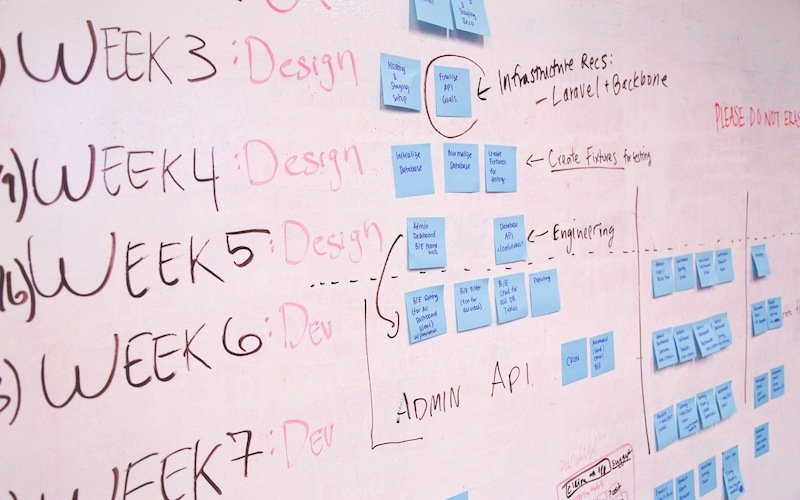
Mythbusting, Project Management
By Scio Team
Whether you are coding software or managing a company that creates software, the name of the game is optimization: there’s always a better way to do things, a wrinkle to iron out, a bump to flatten quickly. However, even if we somehow reach a perfect process, it will probably not last long. Technology is always moving forward.
Then why is it often difficult to adjust your development practices to ensure you always obtain a better outcome? Why is it so hard to leave behind “tried and true” methods of development to try new ideas to better the efficiency of any process?
It’s not surprising to find out that the root of a lot of these issues lay within human psychology, specifically a phenomenon that can help us understand how we conceive our practices, and the sooner we can work towards mastering how it works, the better our outcomes will become: cognitive inertia.
The human side of change.
“Cognitive inertia” is a term gaining popularity in software development, and with a good reason: it aptly describes why it might be so hard to change approaches to development, even in the face of an evident need of trying something else:
“Changing management is an age-old problem; migrating to a new process with new technologies can represent a big change. The management teams are met with cognitive inertia and a long list of reasons why new methods and technologies will not work. So, instead, they work harder, and the harder they work, the farther behind they get”, points out Barry Hutt, CRO at Viviota Software, in his post “Cognitive Inertia a great challenge to innovation.”
It’s a paradoxical outcome, but to begin to understand this issue, we should define clearly what “cognitive inertia” is. Cognitive inertia is not “belief perseverance”, or the phenomenon of maintaining the same belief even when presented with new information. Instead, cognitive inertia is the inability to change how a person processes information, which is a much more complicated framework that involves motivation, emotion, and developmental factors.
Its consequences can be seen easily in software development when we think of practices like testing or brainstorming, which makes the old adage “work smarter, not harder” a difficult one to implement, especially as a project or an organization grows in complexity.
“Cognitive inertia evolved because the brain optimizes energy efficiency. If you keep the same behavior and don’t question it, your brain conserves space and can make faster, simpler decisions. On a social level, maintaining consistent behavior preserves social cohesion by maintaining social roles and responses”, explains the blog “Cognitive Inertia: The Status Quo Bias” by Joseph Adebisi.
However, it’s obvious why in a field like software development this can bring problems in the long run. After all, even if roles in a development team are clearly defined, the multitude of solutions that need to be reached at every step of the process (from the ultimate goal of the client to fixing the smallest of bugs) benefit from the creativity that surges from having multiple approaches.
The key to collaboration
The approach of Scio to this issue, both internally and in the work, we do with our clients, is knowing that a “solution” is more than having the seemingly right answer for everything; it is developing a process that lets you question and rework the methods you used to arrive at to fine-tune the outcome.
“When you build walls, it’s easy to keep piling bricks on, one after another, in every house you build. That might work for a while, but if now you are looking to build something with a different purpose, like a cathedral or a hospital, will that approach still be the best?” comments Luis Aburto, CEO, and Co-Founder of Scio. “What happens when you partner with someone that comes and says ‘hey, maybe this bricklaying will not support the multiple stories we need for a hospital, so what if we try this instead?’”
A culture of constant sharing through collaboration, then, might be a way to avoid the pitfalls of cognitive inertia. After all, cognitive inertia, as real inertia does, keeps the same trajectory if nothing initiates a change, so the more different perspectives you have, the stronger the final product may be.
“Human beings love to help. Doing it productively and seeing people overcome obstacles it’s a very rewarding experience, and at a company like Scio, where collaboration is a key part of us, you also get the benefit of cross-pollinating different parts of your organization”, says Yamila Solari, Co-Founder and Coaching Leader at Scio. “If you create a culture of mutual help and support, where one person talks to another and so on, your culture is always enriching itself.”
This makes coaching one of the best tools Scio has to keep our organization moving forward, making sure that knowledge gets shared around between collaborators to strengthen the outcomes of every person and every team. This circles back to our earlier article about outputs and outcomes in software development, where we try to understand the purpose and goals of any project we collaborate with before deciding on the approach that will work best for that specific job. Sometimes laying bricks in the usual way will be enough, but that doesn’t mean that developers shouldn’t have an open mind to try new things if they hit a snag during development.
Cognitive inertia in the day-to-day
However, one should not assume that the issue of cognitive inertia only affects an organization at the macro level, or that it is always a bad thing; it’s part of our daily work whether we notice it or not. For example: if you are focused on a task, and an interruption comes (be it a software update, an Internet outage, an unforeseen meeting, or even a coworker just stopping by to ask something), how difficult is it for you to resume your rhythm at full speed?
Martin Cracauer, CTO of the software development firm Third Law, holds the opinion that the way our brain absorbs information and uses it in the short term is a form of cognitive inertia, and keeping information properly compartmentalized is a way to ensure a task, or a whole project, doesn’t get derailed:
“A lunch break absorbing lots of information that has nothing to do with your work task is relaxing because it does not compete with the work task memory. But a work meeting that touches actual work stuff competes for the same cognitive machinery. […] Your Company makes its money on the programming tasks that are completed today, so you just traded away the brain state needed for Today’s Task in favor of some imaginary later benefit.”
What this means is that some form of cognitive inertia (the one that puts a developer “in the zone” when writing code) can be used to the advantage of the development cycle if we structure the project with clear goals and purposes that need minimal interruptions, and let the developer to fully focus in the day to day progress.
The Agile methodologies, when well implemented, help with this as it lets organizations like Scio maintain a high level of cohesion in the development cycle that doesn’t give enough space for distractions. A well-managed team knows its goals, the potential pitfalls, and biases that can surge in development, and has the support to focus on the tasks that actually get things done, letting the outcome dictate everything else the product might need.
Cognitive inertia, then, is not inherently a good or bad thing in software development; a well-balanced organization can manage, and even use it to its advantage. After all, the software is not about working harder, it’s about implementing the smartest approach and letting the results speak for themselves.
The Key Takeaways:
- Cognitive inertia is not stubbornness, it’s the way some people get used to processing information in their day today.
- Changing this inertia can be difficult, but is not an insurmountable problem, and it’s a critical need for software development.
- Collaboration and tools like coaching can be effective in mitigating the effects of cognitive inertia, feeding constant new information to avoid settling on a single approach.
- However, cognitive inertia is not all bad; it helps a developer to focus as long as interruptions and problems derived from sudden changes of course are avoided.
- It all comes down to good management. Being aware of bias and cognitive traps, constantly encouraging new knowledge between collaborators, coaching and a good implementation of Agile methodologies can result in a healthy development environment that guarantees a good outcome.

Product Development, Project Management
How to measure productivity effectively? Adolfo Cruz, Scio’s very own Project Management Office director, offers insights into a question many in the business have in their minds all the time.
By Adolfo Cruz.
Building an exact image of productivity is a question with no definitive answer yet. Defining what “productivity” means for someone starting a business for the first time is a complex process. From everything I’ve learned these 14 years at Scio, each person needs to discover what works for them, considering the specific context in which they are trying to succeed.
The thing is, when trying to measure productivity in something as fluid as software development, every seemingly useful metric comes from a different perspective (be it from the client, the developer, or the managers), so if you want to establish a baseline, I would recommend defining priorities first, taking into account your business needs.
How do we measure productivity in Scio?
Early in Scio’s history, around 2008 or so, we tried to implement Agile Methodologies along with some number crunching, like the hours put on a project or the number of bugs, to know exactly how productive our teams were. However, the number of variables involved, like realizing that a specific team had better outcomes because they had certain chemistry between them, made it difficult to translate the results into measures that could be implemented in any project.
So we moved away from that, instead of looking at the results from the client’s perspective, thus defining our productivity as the value our developers are adding to a product during development. Our measures became more focused on people than metrics because helping a client to build a product, adding value at every step, and therefore growing their business, was our main priority.
To this end, building a perfectly calibrated development team that proposes new things, learning and evolving together was the best approach for Scio. A lot of the time it’s not even necessary to keep a register of everything happening during development because the team itself realizes when something’s not right and works out any issue; a team of developers capable of self-management is always a good sign.
If you achieve such a team, you don’t need to measure specific metrics for each collaborator, instead, you evaluate the team as a whole, looking for relevant information that can help them grow, so you should think of questions that help you get the information you need.
For example number, many User Stories were completed in a given time?
- Was there any serious bug in the development of the product?
- How many bugs surfaced?
- What priority did these bugs have?
- How did the team respond to them?
- How long did it take?
However, these questions need to be constructed with the project’s context in mind; although there are a lot of metrics you can use to generate specific “productivity” numbers (like the Personal Software Process popular in the 90s that tried to define productivity through the number of lines of code written), if they don’t reflect reality, then the team will not know how to use this information, as many of the challenges they face can be subjective.
So avoid trying to arrive at exact numbers, and instead, I recommend you to look at the trends emerging from one project to another. A trend interpreted correctly should give you a “big picture” of both performance and productivity, showing places where your attention or some improvement is needed.
First, look for a certain range of information in a development cycle; If the team completed between 5 and 10 stories in a sprint, but only 1 or 2 the next one, there’s probably a red flag somewhere in need of attention. Then dig a little into it, and maybe you’ll find some unforeseen challenges the team needed to prioritize to keep making progress. And finally, make a note out of it, so you can improve the circumstances around an issue so it doesn’t reappear later; that’s how an understanding of productivity begins to emerge.
Most of the trends we watch at Scio are about how our developers contribute to our client’s goals, and we developed some tools to measure that. For example, we use the Team Self-Assessment, a guideline for collaborators to reflect on their work, that we adopted and modified according to what our experiences and specific contexts dictate.
In our TSA, there’s a section where we inquire about bugs surfacing during development, asking how they are preventing issues during development, if they are doing Pair Testing practices, if they are showing their additions to someone else before moving on, and generally if they are focusing on things that matter.
When a team reviews these questions, they realize their areas of improvement, and we work together to avoid falling into them again in future projects, because what you want to do is push your teams into adopting excellence as a natural part of their processes, encouraging them to add their experiences and expertise to the final product.
The subjectivity of a productive team
Productivity is not always a purely technical approach; sometimes you need to look at the business side of things, involving the stakeholders and product owners in the creation of the product to reconcile a multitude of perspectives, converting them into priorities to define the best course of action.
Just remember that you need to experiment in software development, build an iteration of the product to validate its potential, and look for features that can be improved to maximize its success. Your development team will probably need to go back and rework a lot of stuff, updating their methods to create a more efficient version of the product, so your definition of productivity here has to account for it; if stuff is being redone, at least quality should always be improving.
So, to recap, a good measure of productivity is established by defining your business priorities and then choosing the metrics that best reflect the context in which the product will be built. A productive development process gives enough flexibility to iterate and experiment without neglecting business needs, and having your client’s goal as the focus of your team is a great starting point.
Just remember that if you aren’t adapting what you learn into your specific context, capturing the information your team needs, then productivity might suffer. Software is mostly a creative enterprise, so some subjectivity will always be needed to properly define what makes a successful project, fine-tuning every cycle to achieve the value you want for a specific product. With an approach like that, you can be sure your organization will always be improving.

Product Development, Project Management
How to measure productivity? That’s a question that many in the business, from CEOs to coders to engineers to managers, have in their minds all the time, and Adolfo Cruz, Scio’s very own Project Management Office director discusses metrics, measures, and meanings of productivity.
At the end of the 90s, a methodology called “Personal Software Process”, or PSP, was designed to help developers measure their productivity. You had to take a course, there was a lot of documentation to follow through, and you had to use a timer to measure your progress, stopping it every time you needed a cup of coffee or to go to the bathroom.
The idea was to see how much you accomplished in a day, but in fact, this methodology was entangled too closely with the number of lines you wrote, meaning that you were more productive the more you coded, which is not necessarily true.
But if this is not productivity, what is it?
I define “productivity” as finishing a task in a reasonable time. The word “finishing” here is key because productivity is not starting a lot of things, but seeing a project to completion, right until you get a product. However, how do you define exactly when something is “finished” in software development? What criteria do you have to fulfill to say something is done? If we were building something physical, let’s say a boat, first, you need to build a hull, and this phase ends when it fulfills certain requirements.
And although not all boats are the same (building a freighter or a yacht would look very different), in essence, you have the same process, blueprints, and requirements to do it. Software development doesn’t work that way.
Developing software involves a lot of things. You may see it conceptualized as a “factory”, or a development team working like a well-oiled machine, where you input requirements and get a product at the other end. But in truth, there’s an artisanal quality to developing software; everyone has their approach and style, and progress changes according to the team you are with.
This results in a lively debate where no one agrees on the best way to measure productivity. If you ask a room full of developers how many lines of code they write to see if they are productive, you can get a very heated discussion, because how are you measuring that?
The best code is concise and everyone checking it can understand it, so I don’t know how you can see someone writing 10,000 lines of code and conclude he is more productive than someone achieving the same in 500. Maybe it made more sense at a time with no frameworks to build things faster, when everything was a bit more rudimentary and you coded every single piece of the product, but today you have to write very few things from scratch, with a whole range of tools that let you produce, let’s say, the shell of a website in a minute without coding anything directly.
So imagine if a company starts giving productivity bonuses based on lines of code produced per project. They would end up with developers gaming the system to get the bonus or at least trying to not look worse than their peers by writing less, resulting in bloated, inefficient products because the incentive wasn’t centered on creating something useful.
You have to be very careful when linking rewards to metrics, or else you’ll generate a perverse environment where everybody is just racing to inflate numbers.
The Scio way
I’ve been with Scio for 14 years, and since then, perspectives have changed. With the arrival of Agile Methodologies, we moved on from counting lines of code to seeing how that code comes together, achieving working software whose process of development is not focused on numbers, but on how the product is going to be used.
To give you an idea of this evolution, not long ago the requirements of a project were written from the point of view of the system, so every requirement started with the phrase “The system shall…”: the system shall do X thing, the system shall do Y thing, the system shall do Z thing, etc.
So you ended up with a massive document repeating “The system shall…” for every little thing. Then the Agile Movement centered on the user, with requirements stating “The Administrator can…” or “The Manager can…” because we understood that software is not about a system that “shall” do things, but what people in different roles “can” achieve with the product, resulting in productivity built around how much value we give to the final user, not how much code our devs write.
Coming back to Scio, we see it from the perspective of the stakeholders and clients we are building a product for, and our productivity is measured on the information we get from them, knowing how our teams are doing, how much value they are adding to a project, and what their perception of the whole process is. It’s a more people-oriented approach, far from the days of counting lines of code, and more interested in understanding how a developer is contributing to the goals of our clients.
To that end, we developed some internal tools, like the Team Self-Assessment, based on our prior experiences, consisting of questionnaires about the things we consider important for a team to focus on. For example, there’s an entire section about quality, how they are preventing issues during development, if they are doing Pair Testing practices, or if they are doing code reviews to make sure the code is maintainable and scalable…
Are they giving issues the proper attention? Are they documenting them? The team members have to ask themselves if they are focusing on the right issues, and if they aren’t, it’s something we have to improve. That’s how we try to motivate our teams to share their experiences, practices, and insights into our client’s projects.
It is said that only 35% of software development projects succeed, and I think it has to do with the planning stage of a product. Let’s say I want to complete the A, B, and C steps of a project in six months, based on previous experiences in similar projects. But it ended up taking 8 months instead of 6 because something needed to change, does that 2-month delay mean the project is going wrong?
It happens a lot with start-ups trying to create something completely new. In the course of development, it’s common to see something, a feature or function of the product that changes the client’s perspective, that taps into some potential we haven’t seen before, so the plan has to get reworked to harness that and bring its full potential. In six months, priorities can change.
But if we measure the productivity of the process very rigidly, and then that very same process brings out the value in unexpected places that, nonetheless, force you to rework entire parts of the project, it’s easy to see it as a failure.
The Project Management Institute uses these rigid measures a lot, asking for a specific basis, beginning, and end of every phase of a project, and if you don’t deliver them exactly as planned, then you get a mark against you. In an actual software development environment, that doesn’t happen, because the dynamics of a development cycle can change fast.
Software development works by evolution
The measures you have to use are subjective more often than not. Some industries require strictness, especially when manufacturing something, but in the world of software, and start-ups in specific, I don’t think it’s necessary to be like this to create a successful product.
This is why we back away a little from the technical aspects of a project and focus instead on the business side of things, having conversations with stakeholders and product owners to get them involved, reconciling all these points of view about what the business needs, and how development is.
We take a look at the features planned, check how many people ask for them, how critical they are for the business model to work, and decide how to proceed from there, adding real value by focusing on building those pieces first. Technical aspects are solved later, as you first see what the business needs, and then the technical team starts sketching solutions for the challenge.
Productivity is a question with no definitive answer yet.
Considering all this, forming an exact image of productivity is a question with no definitive answer yet. Every individual has to decide what works, but only in the specific context in which that person is acting, so no one has come up with a universal method to measure productivity in software development, as even the perspective from which you measure can change; seeing it from a client’s perspective is a world apart from a developer’s.
As you discover better routes during development that weren’t foreseen during the planning stage, or maybe because the technical aspect ended up being unfeasible for one reason or another, or the infrastructure cost is too high for your purposes, or any other number of reasons, a lot of what you may define at the beginning of the project will change.
You adapt, which is very different from building furniture or producing food, where it is clear what you are trying to accomplish over and over. But in software, where there’s no single solution for the same problem, it’s difficult to reach a consensus on what you need to do in detail.
However, you want to measure productivity, metrics evolve, and whatever method you use to decide how productive your team or your company is, I think the Agile Methodologies got it right, where it doesn’t matter the number of lines, or the documentation you have, or how pretty your database is, what matters to the client and the final user is having software that works.

Project Management, Technologies
Is technical debt a recurring problem you face, or is trying to future proof the software you write the best course of action? Today, we take a look at one of the most complex problems when creating software, analyzing the pros and cons of both approaches.
by Scio Team
Software development is… complex. At its core, it’s an interesting challenge where improvement and evolution happen alongside the construction of the software itself, with the possibility that it changes course when you learn new things, get a new perspective, or bring diverse points of view to the table.
As we said elsewhere, developing software is very similar to writing a novel, or painting a picture: it’s as much of a discipline as is a creative exercise, borrowing and modifying itself throughout the project. However, there’s a big difference between a book and software; the software is part of an infrastructure, meant to interact with a user, across an undefined period, which gives this profession a unique challenge: what happens to the code I’m writing today when tomorrow arrives?
A debt to ourselves
“It’s OK to borrow against the future, as long as you pay it off”, are the words of Ward Cunningham, one of the authors of the Agile Manifesto, which revolutionized the way we look at software development. We all know how borrowing money works in our daily life, but what he referred to is a specific concept many in the software industry are aware of: Technical Debt.
As you may know, technical debt is “the implied cost of future refactoring or rework to improve the quality of an asset to make it easy to maintain and extend”; is the knowledge that certain parts of a program may require to be fixed at some point in the future.
There are plenty of reasons why a dev team may incur this “debt” (be it for budgeting, skill, or deadline reasons), but the nature of its payment is stumbling onto issues that need to be fixed quickly, which may bring more issues later that will require further fixes and so on, effectively like trying to pay a loan with a high-interest rate. If you are not careful, you will end up paying it perpetually.
Technical Debt is considered a serious problem and plenty of literature and management advice have been written to mitigate its effects, but like with any kind of loan, it can bring plenty of benefits if chosen and managed correctly. After all, if we take on a debt, it is for something in exchange, be it having cash on hand to accomplish something, or achieving working software to solve the issue at hand.
And the proper way to deal with debt, be it technical or otherwise, is to pay it on time, which in software development means refactoring a lot of the work done.
However, depending on the level of debt accrued by a team, this refactoring may bring a hefty tag, especially if the time between creating the program and improving it allowed many dependencies to flourish, or some of the knowledge behind the construction to get lost (such as the original team changing), so you may want to avoid the need of refactoring as much as possible because you don’t know the context in which the program will be improved. So what then?
A proof of thinking ahead
Futureproofing may be the answer. What futureproofing tries to do is “anticipate and minimize the effects of shocks and stresses due to future events.” This practice is not limited to software, but it can help to try and mitigate some of the problems technical debt will bring, especially if we are thinking ahead of the need for refactoring at a certain point in the future or having to deal with legacy software inside critical systems in any organization.
However, saying it is much easier than doing it, and any approach to futureproofing a system, so it can be tinkered with or without issue decades from now, is a tenuous art at best. After all, how can anyone predict what software will look like in 2050? The solutions we implement may make sense today, but will probably need some explanations later.
A solution could be, to create software that follows a pattern, so its logic can be easily deduced by a future dev team, as well as taking the proper due diligence when choosing tools and frameworks that have a better chance to remain supported or at least accessible in the coming years, or avoiding “monoliths” where a single application is responsible for tons of functions, but one can still get blindsided by a development impossible to foresee.
This brings an interesting conundrum for many developers trying to find the right approach: is it better to futureproof software to try and avoid technical debt, or is better to acquire some debt if that means having the flexibility to refactor software at some point in the next few years?
Two sides of the same coin
The reason is very simple, yet has lots of implications: if you acquire technical debt, you cannot futureproof because you are assuming you will need to change things. If you futureproof it, then you are making stuff that will greatly resist refactoring, making it likely to turn into “legacy” software.
A good approach to finding a solution to this is developing products with a few things in mind, mainly no software product is forever, and everything has a shelf life that we will need to wrestle with at some point.
“Generally, it is not until something breaks when a team realizes they have a big debt needing to be paid”, commented Scio’s PMO, Adolfo Cruz, about this issue. “It’s more common when a product is brand new and it’s still building its user base. The volume of transactions is low at first, so you may not see any problems, but if the scalability wasn’t planned well, then it’s more likely that debt will flow under the radar until it’s too late, so it’s important to take steps to prevent this.”
The trick is trying to push back that point as much as possible, having the proper procedures to ensure the code can be fixed. A good commenting discipline, for example, can save a lot of headaches while refactoring an application, letting whoever has to modify it knows what can break and what depends on every function. This can work as futureproofing without going into a lot of technical debt, as many of the problems when trying to refactor old programs is the fact that the code sometimes is not very clear, and in places of a lot of personnel turnover (like a government agency), it’s easy to let cracks grow.
The useful approach, then, is considering both of these concepts as the two sides of the same coin: the delicate balance that is developing good software amidst the needs of the now and the later. A great software development team should strive for products that pass the test of time, while also knowing that nothing is perfect, and using the need for refactoring as a tool, not only a problem.
What do you consider is the best approach when creating software? An application with some debt that will let you fix it in the future if it needs to, or building something hard to repair that may stand the test of time?

Entrepreneurship, Nearshore, Outsourced Engineering Team, Project Management, Successful Outsourcing
By Scio
The importance of soft skills in the workplace cannot be overstated, and doubly so for remote work, when coordinating a team you may not know in person is the core of a successful project. But how to apply those skills?
It’s no secret that managing an effective team requires a special kind of talent, one able to bring the best of every individual in the team, while also keeping everyone on the same page, looking at the same goals. In the old days, you could achieve it by having close proximity with your collaborators, keeping an eye on their needs and difficulties, and doing your best to lessen them to create an effective working environment.
But yeah, that was when the office environment was a given, and managing was a face-to-face affair. However, in the New Normal, where remote work is becoming commonplace, probably with coworkers living in entirely different continents, the skill set necessary to complete a well-done project is changing.
How do you communicate an effective company culture remotely? What do you need to manage talent through a screen? Here at Scio, where working remotely has been the norm since the very beginning (both with clients and collaborators), we know how important these skills are, and how they will become more sought after as this organization model becomes more commonplace.
1. Communicating through a Zoom call: More difficult than you think!
Hey, raise your hand if this situation is a tiny bit familiar to you:
Trying to make a joke on zoom – YouTube
Yeah. As we all know very well, conducting a videoconference is tough, as reading your coworker’s body language, emotions and predispositions are nearly impossible at a distance. Humans are social creatures, designed to pick up on gestures and the tiniest social cues while talking, and doing so through the barrier of a Zoom call is an important skill to attain.
That’s why implementing clear communication rules, and enforcing them effectively is so important. Simple etiquette rules (like turning the mic off when not speaking, giving space to questions and answers, or RVSP any invitation), assigning a person the specific task of conducting the call, as well as being clear if the call is more formal (i.e. presentations with clients) or informal (like a brainstorming session) can make a world of difference in the way a team functions.
Once your collaborators internalize these rules, further strategies will be easier to implement, and you will avoid awkward scenarios like that one.
2. The importance of choosing the right tools
“An artisan is as good as his tools”, the shared wisdom says. And that’s true whether you are talking about making a vase or developing a software app; selecting your tools well is just as important as the technical knowledge applied behind.
Zoom is a good example of the pros and cons of these tools. There are plenty of reasons why Zoom became the choice to work remotely during the pandemic (it’s friendly to use and offers a good range of basic options), but that doesn’t mean this software lacks drawbacks (like its lax security) you need to take into account.
The same is true for any tool you have at your disposal to manage teams and projects, and learning to choose and use them effectively is a valuable ability in any remote team. There are plenty of options to try and decide, but also don’t be afraid to discard anything that is not helping the team to reach their objectives.
Here at Scio, for example, beyond the usual suspects (Microsoft Teams, Zoom, Trello, etc.) we developed some internal tools, like an internal guide with the names and positions of everyone in the company, or a proprietary clocking-in page, that we continually improve and tailor to fill the needs of our clients and developers, making sure all of our developers and collaborators have any piece of information they might need.
3. Remote company culture is possible
As we mentioned, certain skills are needed to do remote work well, and these will grow in importance as more projects realize the potential of Nearshore development. The importance of soft skills has grown in recent times, as being able to communicate with your team is just as important as the technical talent you have behind. So what do you need?
- Have clear expectations: For anyone joining an organization remotely, knowing exactly what’s required of them helps build boundaries and focus efforts on things that matter. Lay them out at the beginning, and should have no problems making everyone work towards the same goal.
- Create working structures: For remote teams, lack of structure on a given day can be an obstacle to productivity. That’s why good team leaders establish a clear schedule of deadlines and meetings and explain in certain terms where a particular collaborator fits into the workflow.
- Determine delivery: In a traditional office, the time in front of the computer seemed to be just as important as the work being delivered, which of course is unsustainable in a remote environment. This is why an effective manager keeps track of the actual output every review (let’s say, once a week), to determine the effectiveness of the collaborator, who can set their rhythm with flexibility. As long as the project delivers by the agreed deadline, everything else becomes unnecessary.
- Encourage social interactions: The best teams have chemistry and rapport behind their collaboration, and managing that remotely is truly a challenge. That’s why social interactions are important; celebrating important holidays, giving them channels to communicate freely, and organizing activities for fun help a lot and creates familiarity between co-workers that otherwise will never happen.
- Give ongoing feedback: Good feedback is the lifeblood of any team, and for remote teams, doubly so. Being gentle with it, but also effective and certain, is an important skill for everyone on a team (not only leaders), and learning how to give and receive feedback is critical to delivering better and better projects.
4. The Key Takeaways
So, what does this all mean? That the best remote teams are those with strong structural support behind that lets their talent be used to its maximum potential. So we can have these few takeaways of the soft skills behind an effective remote working environment
- Pure technical knowledge can only get you so far. Managing with a wide range of skills helps everyone feel part of a team in order to achieve objectives.
- Remote working needs certain flexibility to function, but firm boundaries keep the team focused and productive, from a simple call to delivering a whole project.
- A good company culture needs to be clear and well communicated, and implementing it effectively means the difference between a good team and a so-so one.
This is clear for us in Scio, as our Nearshore model is designed to use these methods to their fullest, and guarantee that any project you have in mind has the right team for you.

Agile Methodology, Customer Experience, Project Management, Successful Outsourcing
If you search on the Internet for «agile project initiation» you are going to find a LOT of templates. People want structure and easy answers, so of course, these simple answers rise to the top of every search. Many (if not most) of the templates offered are pared-down formats from the Project Management Book of Knowledge (PMBOK) Project Initiation Documents (PID). There is nothing basically wrong with the idea of using templates or most of the templates offered, except – they tend to become prescriptive when they should be taken as guidance.
From the Agile Manifesto: «…we have come to value:
Working software over comprehensive documentation,»
With that in mind, we should ask – why do we document agile projects? Often, the answer is – because it is required (by someone) when in reality the answer should be – to communicate. But again, that simple answer fails to guide us to the necessary outcome:
- Documentation should be a natural part of agile project initiation, but not the goal. It should proceed from on-going discussions between stakeholders, the product owner and the development team that is developed in Sprint 0, but it must not end there. The conversations and the documentation of outcomes must continue through the lifecycle of the project and the product.
-

Initial documentation is just a strawman
Documents gathered from product owners and key stakeholders are starting points, not final documents. Documents developed by a designated team member to fill out a template are strawmen to be examined, discussed, questioned, and used as a base for the ongoing development of understanding within the entire project team.
- Living documentation formats should be preferred over static. In smaller projects, it may not be necessary to manage documentation formally, but in most cases using the same concepts as those used for source code management is a valid guideline. Properly maintained, living documentation answers the questions, «when was this decision made? by whom?» and gives a revision history that tells the story when necessary, but only makes it apparent when needed. It needs to include simple artifacts of these discussions – photographs of whiteboards, screenshots of modified mockups, etc. – in preference to notes developed after the fact and out of the sight of the team.
- During Sprint 0, the aim must be to develop enough trust among the project team members to allow questions and dialog to form the base for a common understanding of those items that are included in most PID templates. If initial documentation is «handed down from on high» to team members without open, trusting discussion – it cannot be internalized by the team and it will not respond to the inevitable changes that will come as discovery and learning continue throughout the project. Agile software development embraces change by allowing the project team to recognize the inconsistencies and discoveries that will come out during development, surface them and deal with their impact through discussion and collaborative negotiation.
And before we get too far away from it – there are some really strong ideas in the Agile Modeling page on Agile/Lean Documentation. Honestly, though, there is a lot of information in that reference that should really be digested as a part of understanding agile, not as a guideline for a new project. For that purpose, this short piece is a better resource. But, if the outcome of project initiation is not a bunch of filled out PID templates that we can all take back to our cubicles and file away – What is it?
Agile Project Initiation is All About Communication
With the ideas we have mentioned in mind, we have to acknowledge that open, trusting, collaborative communication does not happen automatically in an agile project team. There are natural stages that every group will go through before they can have the kind open discussion needed without fearing it will harm relationships and respect. Discussions need to be wider than the project infrastructure, technology, and user stories, without the feeling an individual is stepping over the boundaries by asking about non-functional issues. We might need to know:
- Does the culture and background of key user profiles matter to the software development team?
- Does the role of key subject matter experts (SMEs) in product development for an organization make a difference to who needs to be included in discussions?
- Are we using a Lean Product Development model with the inclusion of stakeholder users as part of Minimum Viable Product (MVP) development?
- If we are working in a DevOps implementation, how does that change our standard production procedures?
There are all sorts of questions that are not (and cannot be) included in standard PID templates but could be critical to a specific project. If we don’t discuss our viewpoints and ask questions, we run the risk of assuming we have a common understanding and making decisions based on those assumptions. Every project, every team, every organization is different. In the best case, we can open ourselves up to collaborative discussion by getting the team together, face-to-face during project initiation, for dialog and team building using team games and facilitation with a bias to being productive, explorative, and fun. Using these techniques, we can strengthen the bonds and shared risks necessary to maintain a successful project throughout its lifecycle.
 In cases where face-to-face project initiation is not possible (hopefully more rare than the rule), much can be accomplished with video/voice meetings if they are relatively short and like agile documentation, structured just enough to ensure the meetings reach necessary outcomes and allow for continued direct discussions among stakeholders in the team when needed. There is nothing much worse than sitting in a meeting where a long, passionate discussion between two team members seems to be sucking all the air out of the room – and the meeting outcomes are lost.
In cases where face-to-face project initiation is not possible (hopefully more rare than the rule), much can be accomplished with video/voice meetings if they are relatively short and like agile documentation, structured just enough to ensure the meetings reach necessary outcomes and allow for continued direct discussions among stakeholders in the team when needed. There is nothing much worse than sitting in a meeting where a long, passionate discussion between two team members seems to be sucking all the air out of the room – and the meeting outcomes are lost.
This piece is relatively short and again, more of a guideline than a prescription for agile project initiation, as it should be if we are to «eat our own dog food.» Bottom line:
- Don’t be afraid to pull out a template when you start your next project, or when you look at it – crumple it up and throw it away so you can start your own list based on what you know and don’t know.
- What you think you know or don’t know are assumptions and should be treated as such both during project initiation and throughout the project. Only a discussion with open questions between team members can validate ideas and give us a basis for moving forward. And the assumption that is understood as valid today may not be completely correct at another time.
- Documentation must be limited to what is necessary when it is necessary and maintained throughout the project as living knowledge. Agile documentation should not be the domain of one person or one role. It must be available and dynamic – allowing everyone on the team to contribute when necessary – in a wiki-style rather than as a bunch of locked Word documents.
- Agile project initiation should focus on both the productive side – bringing together the information needed to organize the project, initialize environments, and the functional user stories needed, as well as the people/team side – developing the understanding, trust, and communication necessary to work collaboratively throughout the project. Ignoring either side is perilous. Assuming the job is done at the end of Sprint 0 is fatal.
Scio is a vendor of agile, nearshore services for software development projects with our customer base in North America. We can provide project-based or dedicated teams as required for each situation. We would be glad to discuss how our broad base of experience and skills could help you be successful with your next project. Contact us for more information.


















